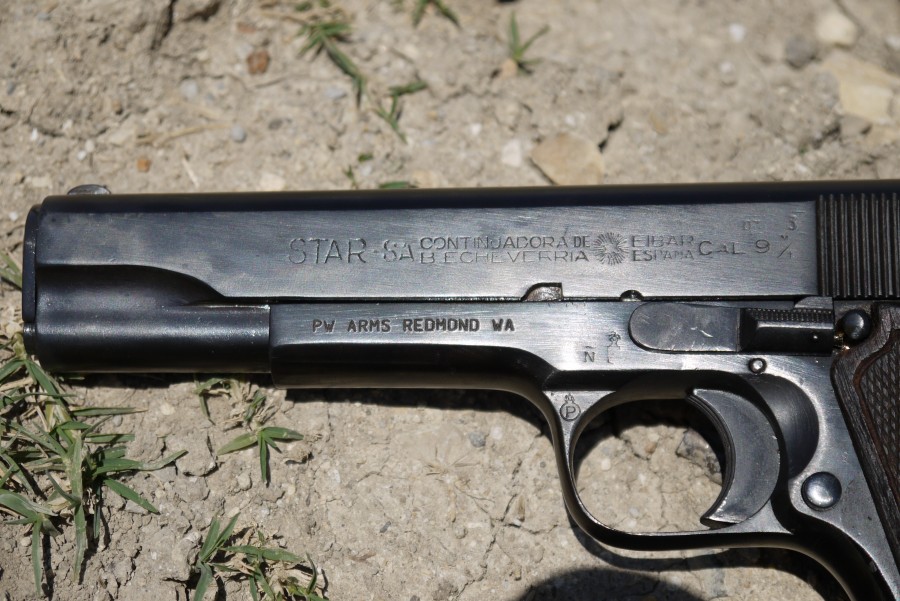
Star Pistol Serial Numbers
Star B I need help understanding some of the stamps on my Star B. It’s been in a gun safe (clean and oiled) for the past 21 years. Prior to that, the person who I bought it from bought it from a widow who was selling it. She told the gun collector that her husband had owned it for a long long time, but she didn’t know anything about it. Here is what I do know – or at least this is what I think I know.
I am wondering if anyone knows anthing about this pistol my father left me. It is a Star Model B, Serial number 460071. I am unable to find very much information on it, does anyone have any suggestions on how to find information? I looked it up with the Proof dating and learned it was made in 1955.
English conversation practice by grant taylor pdf creator. At the end of this are my questions. Check out the pictures and PLEASE share your knowledge. Star pistols are manufactured by the Spain-based company Bonifacio Echeverria, SA. Back in the 1920s the company began to develop semi-automatic pistols, based on the Browning-designed Colt M1911 design. These pistols were more or less similar to the original M1911, but chambered for 9x19mm Luger or 9x23mm Largo. Mine is in 9mm Luger (.08) as seen in the picture. Across the slide it is stamped 'STAR B.
ECHEVERRIA', and then underneath that is 'EIBAR-ESPANA' and at the end of it all is 'S.A. The first part of this inscription identifies the pistol as the Star Model B that was manufactured by ECHEVERRIA. The next part of this stamp, 'EIBAR-ESPANA' indicates that the firearm was manufactured in the Eibar region of Spain. The abbreviation 'S.A.' Is basically the Spanish equivalent of 'inc.' Or incorporated.
The model B was widely exported into many countries, including Hitlers' Germany, and was used during WWII. More specifically, During WW II, the Star factory produced numerous arms for mostly Axis and other aligned countries. The full-sized guns (such as the Model B) were employed by police, second-line units and certain Special Forces troops. The Star B in 9mm “Parabellum” simply means that it was designed for war.
08” is the Luger, and more recently the cartridge that fits it is called the 9 mm. My Star model B in 9mm was made between 1931 and 1983. It is the M1911 A1 version, which came with the added back strap. In 1931, production shifted entirely to this updated version of the B model, which added several, mostly external, features to make the pistol look and handle more like the Colt 1911 A1. There are four possible marks on any Star firearm. Three are three of them found on my Star B.
First, the helmet over the X indicates admission to (receipt at) proof house (Used after July 9 1931). Secondly, the P in the circle indicates passing of proof test – Automatic pistol from Eibar proof house (Used after December 14, 1929). Finally, the Q with an asterisks over it indicates year of proof (date indicated is 1946?). I am not sure what “date indicated is 1946” means??? The Echeverria (Star) company has published records of five variations (shipments) which are the ACTUAL Nazi German delivery contracts. My Star B has the serial # 255598 (from the fourth variation), which was delivered on June 6, 1944 to Handave France, a town near the Franco Spanish boarder.

It included 8000 pistols; serial numbers 200 and 250. I am wondering if this is correct and any information that you can give me on this??? My biggest question is about the Nazi eagle stamp shown in the picture # 4(Zero or Q)20. I am not sure if the second digit in the stamp is a zero or a Q. So it could be 4020 or 4Q20. This stamp is on the frame back by the hammer and safety.
What does this stamp mean? Give me as much history as possible. Finally, the pictures of guns like mine sometimes show the stamps with white in the groves/etching. I guess I am wondering if mine could be one of the many dip blued by the Russians.
I know that following WWII, the Soviet Union (and many others) reviewed the weapons that had been captured during the war. In some cases, small arms were captured in such large quantities it made sense to officially adopt them into government stocks. As was typical Soviet practice at the time, a re-arsenal finish (or 'Dipping' or 'dip bluing' was applied. This is a sort of hot bluing process that quickly puts a thick coating of something very black on the outside of all mild steel parts. As you will notice, my Star B does not have any of the white lettering. I love the history behind guns and enjoy the research as much or more than firing them.